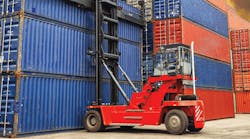The last time we looked in on the Shippers Conditions Index—a monthly score developed by analyst firm FTR Associates to indicate the current transportation environment for shippers—the number was a less-than-robust -7.5. Any number under the zero threshold means things aren’t going too well, but a score that reaches -10.0 is a telltale sign that conditions are reaching a critical level. So it’s a bit concerning that the most recent score (for the month of June 2013) dropped more than another half-point to -8.1.
Adding to the worsening situation is that the new Hours of Service regulations didn’t take effect until July 1, meaning the aftermath of those rule changes aren’t even a factor in this -8.1 score. “We estimate that the onset of these new regulations will eventually pull about 3% of truck capacity out of the system,” says Lawrence Gross, senior consultant for FTR. “Offsetting this removal of capacity is the currently weak freight environment due to an economy which is growing slower than we had expected (or hoped). The net effect is to postpone significant tightening of capacity into later this year or even next year, depending on what happens with the economy.”
So if you connect the dots, what Gross is saying is that because the economy is still sluggish and is likely to remain so for the foreseeable future, the expected negative impact of the Hours of Service changes (i.e., tighter capacity) won’t really be seen for a while. It’s a simple formula, really: Less Freight = More Capacity. If you’re able to squint really well, you can make that look like good news. Of course, the corollary to that formula is Less Freight = Less Revenues, so this good news only goes so far.
One thing to keep a close eye on is freight pricing. According to Rosalyn Wilson, transportation analyst with Delcan Corp., the trucking companies “are beginning to gain pricing power, as evidenced by the fact that the time lage between cost increases and rate increases has reduced substantially.” Referencing another statistical benchmark, the Cass Freight Index, Wilson points out that while shipment volumes dropped in July 2013, freight expenditures were up, particularly in comparison to last year. Freight volumes were down 2.3% compared to July 2013, while expenditures were up 0.9% versus a year ago.





